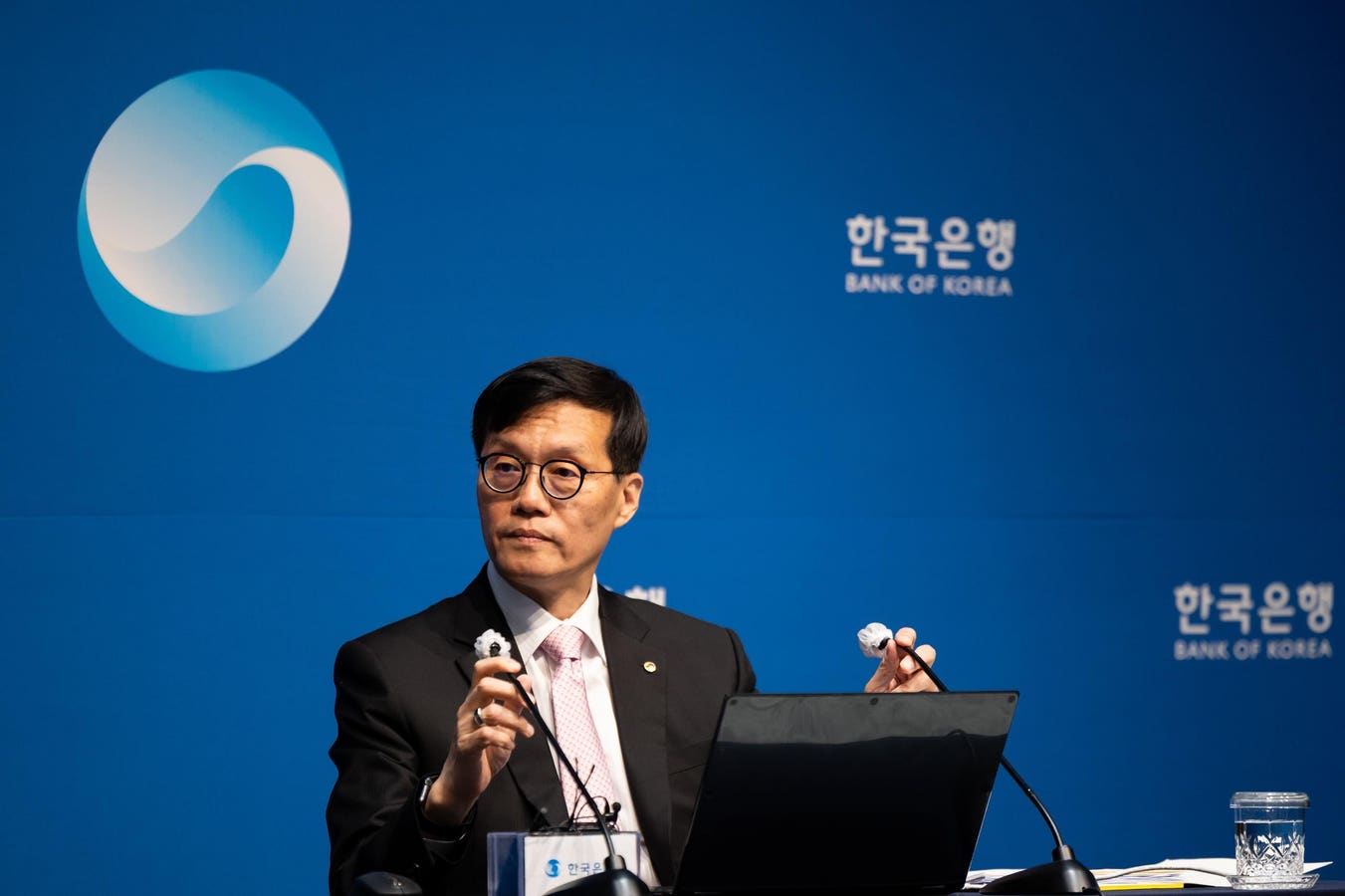Rhee Chang-yong, Governor of the Bank of Korea.
SeongJoon Cho/Bloomberg
Almost everything that Governor Rhee Chang-yong and his team at the Bank of Korea thought they knew about 2024 was being turned upside down.
China is not recovering as many economists expected. The Federal Reserve is not going to cut interest rates five times. Japan is not coming out of quantitative easing, a realization that causes the yen to disappear in real time. The dollar’s biggest rally since the early 1990s is defying financial gravity despite the US national debt approaching $35 trillion.
Few economies are more at the forefront of these crosscurrents than South Korea. Its large, open economy is also caught squarely in the middle of economic tensions between Beijing, Tokyo and Washington. How Rhee’s team and President Yoon Suk Yeol’s administration balance trade ties with China, the fallout from a falling yen and Seoul’s vital security alliance with the US.
This week, Rhee admitted that the BOK is reconsidering the timing of the rate cuts that economists had been expecting. The reason: a weaker-than-expected earnings and a firmer-than-expected Korean economy. Again, trends Rhee’s team probably didn’t see coming back on January 1st.
During an Asian Development Bank conference in Tbilisi, Georgia, Rhee explained that “whether the timing of the rate cut will be delayed, how much it will be pushed if so, or whether it will come is the question that needs to be resolved. . revised. I wouldn’t call it starting from scratch. But the situation has changed since April.”
Much of the confusion comes from the very mixed signals emanating from the world’s most powerful monetary authority: the Fed in Washington. There, President Jerome Powell knows as much about what his team will do as any of us. Someday, traders are convinced that the Fed’s next move will be to cut rates. Next, Lawrence Summers believes the Fed’s next act will be to adjust the increasingly plausible sounds.
According to the former US Treasury secretary, hopes that inflation will soon fall to 2% from 3% are increasingly fanciful. Summers worries that a rate cut in the coming months would only throw more monetary fuel on the fire, meaning that easier policy would only be counterproductive.
Here, Powell’s opinion is hard to discern. This week, Powell offered something for both sides: the hawks and the doves. The former audience heard him explain that while inflation has cooled over the past year, it remains higher than expected. As the Fed’s statement said: “In recent months, there has been no further progress toward the committee’s 2% target.” Later, Powell added that “we remain very vigilant about inflation risks.”
The inflation doves got their due from Powell when he raised the specter of pandemic-era supply-side distortions virtuously “unwinding.” In other words, who really knows where rates are headed in the short term?
Certainly not Rhee and his fellow politicians. In recent comments, Rhee cited the change of face at Fed headquarters in Washington and the resulting rise in the dollar as complicating factors in Seoul.
The won is not falling as fast as the Japanese yen, falling 4.5% year-to-date compared to the yen’s 7.8% decline. But strong dollar rallies don’t usually bode well for Asia. And more than a quarter of a century after the Asian financial crisis of 1997-1998, the region is facing challenges that echo that era.
One is the fear of large capital outflows as more liquidity rushes into dollar assets. Another: that Korea could import increased inflation thanks to a weak exchange rate.
As tensions in the Middle East escalate, Russia continues its invasion of Ukraine, OPEC cuts oil production and the US-China trade war heats up, global prices are much more likely to rise than fall in the coming years. months A weaker won will only increase the risks of Korea importing inflation.
The high odds that the dollar’s rally will continue complicates Rhee’s year. As the magnetic force around the globe’s reserve currency strengthens, officials in the economies of Korea, China, Japan and Southeast Asia will have their work cut out for them to keep the currencies aloft.
It’s not all bad for Korea, of course. Despite all the concerns about downward pressure on the won, Korea’s exports are experiencing a healthy boost. The value of shipments abroad increased by 11.1% compared to the previous year in the first 20 days of April.
But with the Fed extending the “higher for longer” era for US yields, Rhee’s job is getting harder by the day. The same goes for colleagues in the region who could be excused for being equally fed up with the mixed signals coming from Washington.
#Fed #Jerome #Powell #South #Korea #coming






